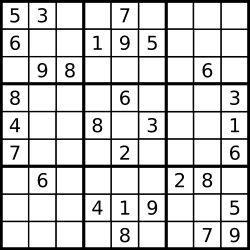Write a program to solve a Sudoku puzzle by filling the empty cells.
Empty cells are indicated by the character
'.'.
You may assume that there will be only one unique solution.

A sudoku puzzle...

...and its solution numbers marked in red.
No comments:
Post a Comment